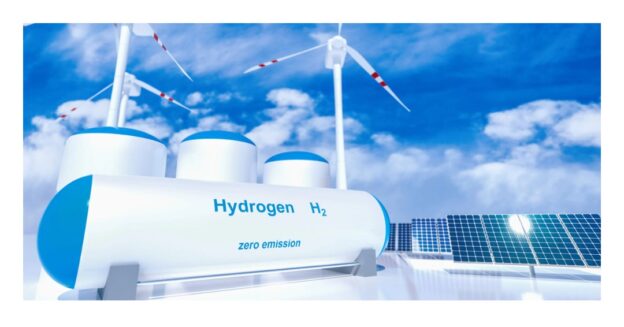A study focused on turning waste plastics into high-value graphene just unlocked a new way of producing hydrogen that could transform the nascent industry and, on a grander scale, positively alter projected decarbonization pathways. The breakthrough could be a win-win for the environment, recycling plastic waste – of which the world has approximately 6.3 billion tons – while providing high-yield hydrogen gas which can be used as clean fuel, all while producing graphene as an end product which makes the whole process economically viable. The breakthrough is detailed in a new paper in Advanced Materials.
Until now, the relatively pricey process of creating green hydrogen (as compared to combustible fossil fuels) has been a major barrier for bringing the industry up to a commercial scale. While plenty of hydrogen is already being produced and used in industrial applications, all but a slim fraction of this is gray hydrogen, or hydrogen produced from fossil fuels including coal and gas. Green hydrogen is produced from clean energies, and represents just a sliver of the current hydrogen market.
But if green hydrogen is being produced as a by-product of graphene production, the clean fuel pays for itself – and still yields a considerable profit. “We converted waste plastics-including mixed waste plastics that don’t have to be sorted by type or washed-into high-yield hydrogen gas and high-value graphene,” Kevin Wyss, who led the groundbreaking research at Rice, said in a press release. “If the produced graphene is sold at only 5 percent of current market value-a 95 percent off sale-clean hydrogen could be produced for free.” Of course, the process would still need to be powered with renewable energies for the hydrogen produced to be ‘green.’
The process involves a technique called flash joule heating, developed at Rice. “It involves grinding plastic into confetti-size pieces, mixing it with a conductive material, placing it in a tube, and then passing a very high voltage through it,” Singularity Hub recently reported. “This heats the mixture to around 5,000 degrees Fahrenheit in just 4 seconds, causing the carbon atoms in the plastic to fuse together into graphene and releasing a mix of volatile gases.” Of these gases, there was a significant amount of extremely pure hydrogen. Moreover, since all of the gases’ carbon is converted into graphene, the process does not release any carbon dioxide.
Despite its slow start, the green hydrogen industry holds great promise for the global decarbonization effort, as it can be used in industries that are particularly hard to clean up, such as steelmaking and shipping. Unlike solar and wind energy, hydrogen can be used as a combustible fuel source, meaning it can replace fossil fuels in industrial furnaces, leaving behind nothing but water vapor when it’s burned. The potential implications of a wide-scale replacement in high-heat industrial applications are hard to overstate. “Replacing the fossil fuels now used in furnaces that reach 1,500 degrees Celsius (2,732 degrees Fahrenheit) with hydrogen gas could make a big dent in the 20% of global carbon dioxide emissions that now come from industry,” Bloomberg Green wrote last year in report titled “Why Hydrogen Is the Hottest Thing in Green Energy.
However, while it seems that converting all of these heavy industries to green hydrogen as soon as possible would be an obvious win for the environment, the reality is not quite so simple. Production of green hydrogen requires enormous amounts of clean energy which may be better used in other applications. A 2022 report by the International Renewable Energy Agency (IRENA) warns against the “indiscriminate use of hydrogen,” cautioning policy-makers to consider that overuse of green hydrogen “may not be in line with the requirements of a decarbonised world.” As such, diverting too much green energy toward hydrogen production could actually slow down the decarbonization movement as a whole.
Therefore, green hydrogen scaling will need to be weighed with a careful cost-benefit analysis in different contexts. But the added elimination of plastic waste, and generation of revenue, certainly adds a wealth of new benefits to the roster.
By Haley Zaremba for Oilprice.com
https://oilprice.com/Energy/Energy-General/Plastic-Waste-Becomes-Clean-Hydrogen-Goldmine.amp.html





